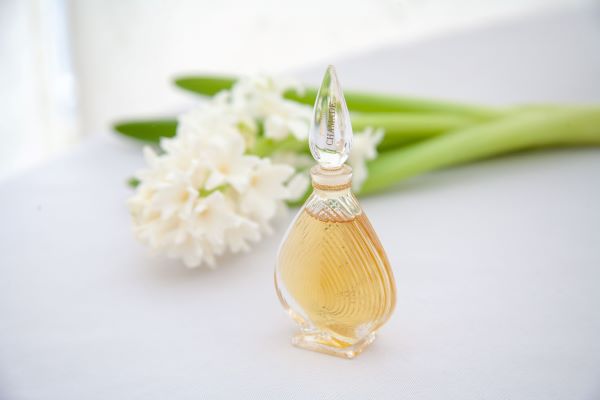

“The art of fortunate proportions” is how Edmond Roudnitska described perfumery. According to the legendary perfumer, a good fragrance has balance and an original form, a simple idea that is far from easy to realize. Roudnitska spent his career creating fragrances that exemplify perfumery at its most artistic—Christian Dior Diorissimo, Eau Sauvage, Diorella, and Rochas Femme. His compositions have elegance and character, but one of the distinctive trademarks of Roudnitska’s style is balance.
When I speak of balance in perfumery, I mean both the aesthetics and the technique. Consider Guerlain’s Chamade, one of the most perfectly balanced fragrances. From the bright green top notes to the rose and hyacinth heart and the velvety woody notes, the perfume unfolds like a silk scroll. Similarly modulated is Dior’s Diorissimo, where the musky and spicy notes balance out the floral and green accords.
Still, balance alone is not the ultimate goal. “The fortunate proportions” in Roudnitska’s philosophy follow the artist’s vision because a well-balanced perfume can also be a dull one if it lacks originality or character. To counter the lassitude, perfumers may apply the technique of overdose, using a large proportion of a specific material and pushing the composition’s center of gravity. This is similar to George Balanchine making his dancers hover off balance in order to create tension and slow downtime. The effect of such off-center balance is as dramatic as Odile’s 32 fouettés en tournant.
A striking example of such an approach in perfumery is Balmain’s, Vent Vert. To create her spring etude, perfumer Germaine Cellier added galbanum, an intensely green, pungent essence that smells of bell peppers and bitter sap. Set against a delicate floral backdrop, the verdant, sharp accord is as jolting as a gust of wind on an April morning. (The current version of Vent Vert has been through a number of reformulations and while it is markedly different from Cellier’s original, it retains the exhilarating off-balance effect.)
Another legendary perfume with intriguing proportions is Chanel No 5. Perfumer Ernest Beaux used a cocktail of aldehydes to give radiance to a rich bouquet of ylang-ylang, rose, and jasmine. Aldehydes smell of snuffed-out candles and also of waxy orange peel, a scent that’s borderline unpleasant in its pure state. But the right amount in Beaux’s hands evoked warm skin and champagne. Beaux also used a generous dose of aldehydes to reinterpret white flowers (Chanel No 22), spices (Bois des Iles), and leather (Cuir de Russie).
Roudnitska himself didn’t hesitate to play with the balance of components in order to convey his message. For Rochas Femme, one of his most sensual compositions, he used a sweet, plummy note to recast the dry, austere chypre accord of woods and mosses as opulent and warm. Femme was created in Paris in 1943, and it was Roudnitska’s vision of beauty as much as his protest against the war.
Photography by Bois de Jasmin
https://perfumeshop.com.bd/what-makes-a-perfume-great/?feed_id=19286&_unique_id=649de178f084b
Comments
Post a Comment